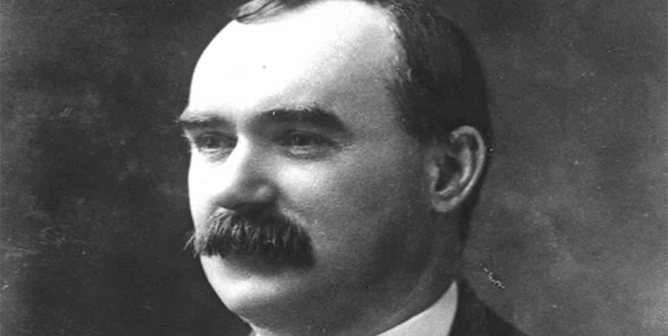Who Was James Connolly?

Irish hero, James Connolly was born in Edinburgh’s (surprise?) Cowgate area on the 5th June 1868.
His parents, John and Mary, were Irish Catholic immigrants who originally came from County Monaghan. Connolly was born in deep poverty, his father worked as a dung collector on the Scottish capital’s streets whilst his mother, Mary, was a domestic servant. The young Connolly left school at the age of ten to work as a labourer in a print shop.
When he was just 14 years old he change both his age and his name to join the British Army. He used the surname Reid. The army sent him to serve in Ireland in the south east of the country. During this time he met his future wife, a Protestant girl called Lillie Reynolds. Connolly’s service in the army enabled him to witness how the British and the landlords treated the poor and dispossessed Irish. He deserted the army in 1887 and returned to Scotland in 1888. He was married in Perth in 1889, using his true surname Connolly.
In Scotland Connolly became involved in the Socialist and Keir Hardy’s Independent Labour movements. He was also the editor of the newspaper “The Socialist”. In 1896, Connolly returned to Dublin where he was helping with organising the Dublin Socialist Club into the formal Irish Socialist Republican Party. He also founded and edited the newspaper “The Workers Republic”. Later, he began his career as a prolific writer of political documents and books.
In 1914, Connolly founded the Irish Citizens’ Army in order to protect workers against armed gangs financed by the employers. In the run-up to the Great War, 1914-1918, many Irish Nationalists, including members of the Irish Volunteers, were willing to give their support to the British in the mistaken belief that they would gain Home-Rule later. Connolly rejected this and instead had his ICA became markedly more militant by parading through Dublin’s streets. This in turn alarmed those members of the Irish Volunteers, the Irish Republican Brotherhood (IRB) and Sinn Féin who were also disinclined to believe British promises of future self-rule. Indeed they were planning a rebellion for Easter 1916 and decided to take Connolly into their confidence, even appointing him Military Commander of Republican Forces in Dublin.
When the Irish rebels surrendered, Connolly was captured, tried in a hospital, and shot strapped to a chair.